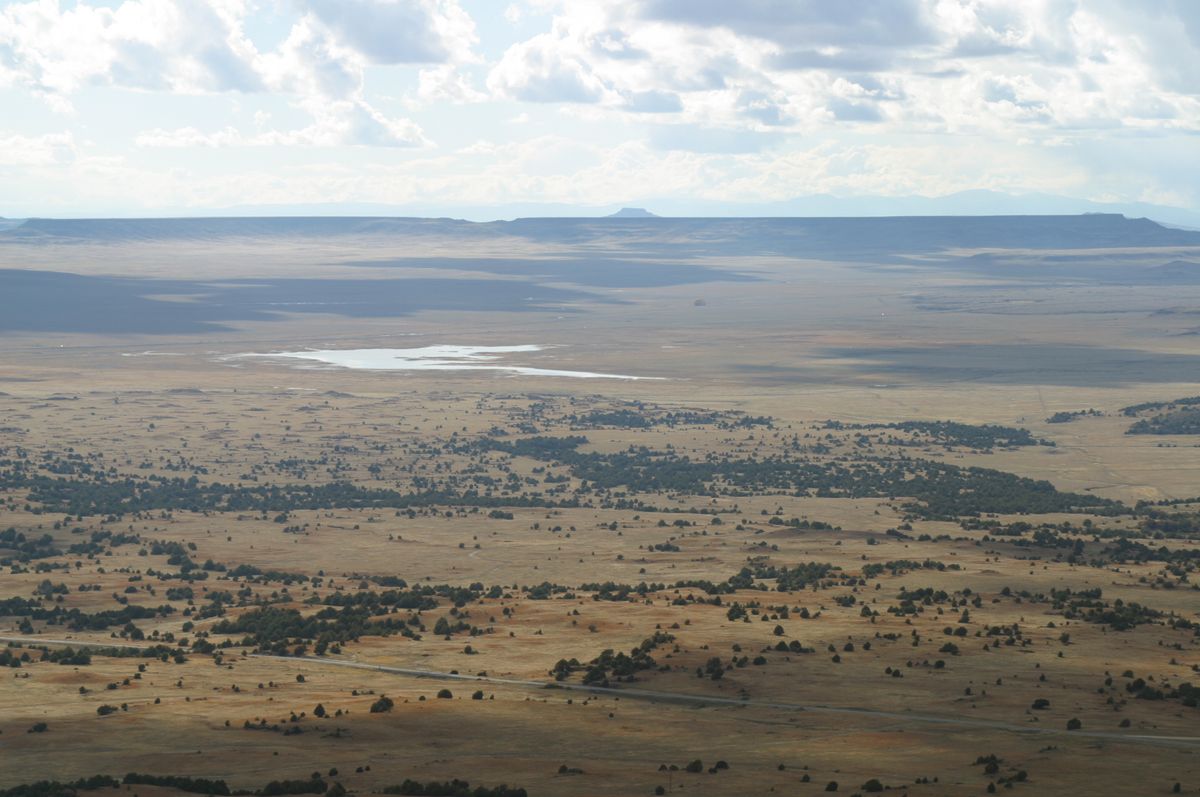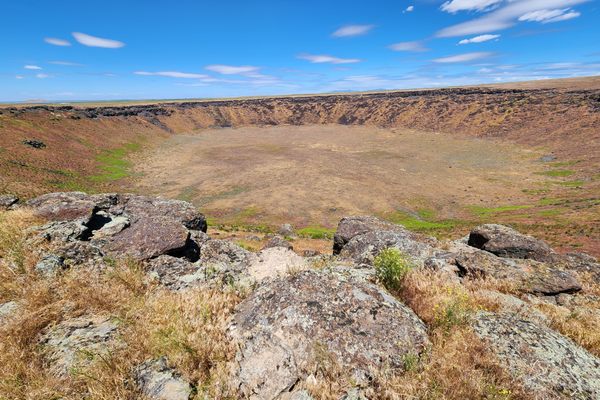About
Around 60,000 years ago the Capulin Volcano erupted for the last time, spewing lava, fire, and ash on to the plains of what is now northeastern New Mexico. Today it sits extinct, its near-perfect cinder cone rising up like a massive anthill some 1,000 feet above the surrounding landscape.
Capulin Volcano was declared a National Monument in 1916 during the presidency of Woodrow Wilson, who called it "a striking example of recent extinct volcanoes … of great scientific and especially geologic interest."
Geologically speaking, the Capulin Volcano is a relatively young and beautifully symmetrical volcano. The rim is about a mile in circumference, while the base is surrounded by the tracks of old lava flows. And from the top of the volcano, visitors can see about 8,000 square miles of the surrounding Raton-Clayton volcanic field, of which Capulin is a part (you can also see New Mexico, Colorado, and Oklahoma from the top).
Thanks to the rich soils around the volcano, Capulin Volcano National Monument is home to a thriving ecosystem. The volcano is covered in pine and juniper forest and a variety of shrubs, the latter including chokecherry, which in Spanish is called capulin, hence the name of the volcano. This habitat is home to mule deer, black bears, mountain lions and more than 70 species of birds, including wild turkeys, roadrunners, and hummingbirds.
Another highlight of Capulin Volcano is the two-mile-long paved road that spirals up and around the volcano to its rim, making Capulin one of the most accessible volcanoes in the world. Volcano Road, as it is known, is one of the most remarkable roads in the state, and is in itself an attraction.
No public transport serves the volcano, so it’s up to visitors to make the ascent independently by car (restrictions apply to larger vehicles). So get ready for a memorable spiral ascent, with no shoulder, blind curves, and some sheer drop-offs as you rise up some 1,000 feet to the rim of Capulin.
Related Tags
Know Before You Go
Capulin Volcano is located at 44 Volcano Road, Capulin, New Mexico, in the far northeast of the state. The national monument is located 34 miles east of Raton and 60 miles west of Clayton, on NM-325 North of US-64. The park is open from dawn to dusk with the exception of the Night Sky Viewing Area. The visitor center is open daily from 8 a.m. to 5 p.m. but the road to the volcano rim closes to vehicular traffic at 4:30 p.m. Always check vehicle restrictions and the current road conditions before your visit. Adverse weather conditions can force the road to close. Bicycles are not allowed on Volcano Road from dawn to 5 p.m., but are permitted afterward. But be careful if you cycle as there are sheer drop-offs and tight turns.
Community Contributors
Added By
Edited By
Published
August 19, 2019
Sources
- https://www.nps.gov/cavo/planyourvisit/basicinfo.htm
- https://www.nationalparks.org/explore-parks/capulin-volcano-national-monument
- https://www.britannica.com/place/Capulin-Volcano-National-Monument
- https://www.newmexico.org/listing/capulin-volcano-national-monument/2548/
- http://nmnaturalhistory.org/volcanoes/raton-clayton-volcanic-field-capulin-volcano
- https://earthobservatory.nasa.gov/images/88581/capulin-volcano-national-monument
- https://www.dangerousroads.org/north-america/usa/606-capulin-volcano-road-usa.html































































